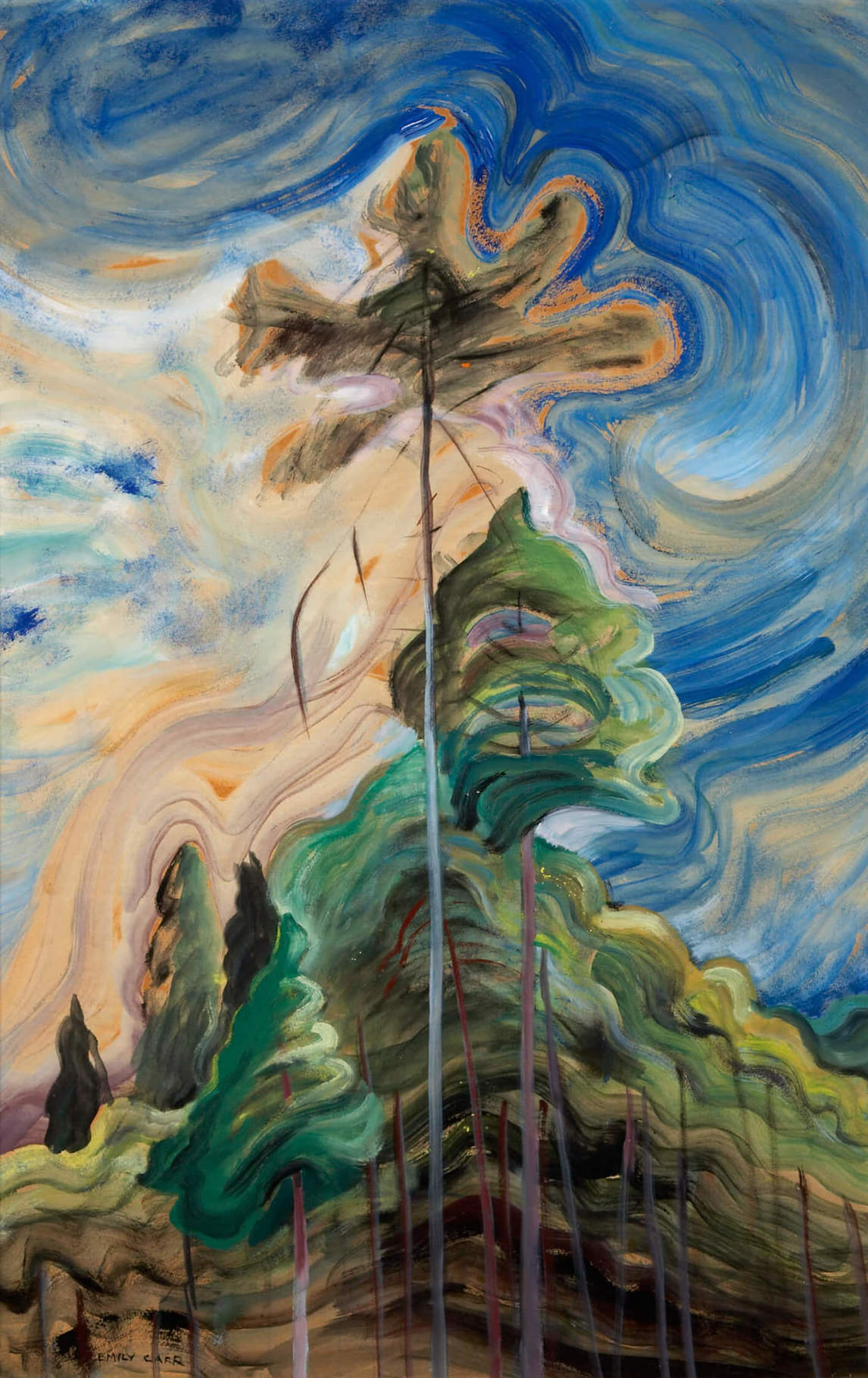Beacon Hill Park 1909

Emily Carr, Beacon Hill Park, 1909
Watercolour on paper, 35.2 x 51.9 cm
Art Gallery of Greater Victoria

Beacon Hill Park, executed a year before Carr’s travels to France, would have appealed to middle-class Victorians: in keeping with the nineteenth-century English pictorial tradition, the balanced composition employs touches of aerial perspective and a neutral palette. The Carr family home, where Emily was born, bordered on the park—one of the most beautiful in Victoria. As Carr later wrote in The Book of Small (1942), Beacon Hill Park was
a beautiful piece of wild land given to the people of Victoria by Sir James Douglas. The Hill itself was grassy, with here and there little thickets of oak scrub and clumps of broom. Beyond the Hill the land was heavily wooded. When you climbed to the top of Beacon Hill and looked around you knew that the school geography was right after all and that the world really was round. Beacon Hill seemed to be the whole top of it and from all sides the land ran away from you and the edges were lost. To the west lay the purple hills of Sooke; to the south were the Straits of Juan de Fuca, rimmed by the snowy Olympic mountains, whose peaks were always playing in and out among the clouds till you could not tell which was peak and which sky. On the east there were more sea and islands. The town was on the north, with purple Cedar Hill and green Mount Tolmie standing behind it. Our winds came from the Olympics in summer and from the icy north in the winter.
From this genteel pastoral scene, no one could have anticipated the radical qualities that would characterize Carr’s mature style of the 1930s. The conservative nature of Beacon Hill Park stands in marked contrast to the paintings she would later become known for, like Sunshine and Tumult, 1938–39, and makes clear the extent of her progress toward an unprecedented visual language for painters of the West Coast. In the decades that followed Beacon Hill Park, Carr shifted her choice of subject and the composition, treatment, and palette of her work, creating the image system we now associate with Canada’s West Coast.

 About the Author
About the Author
 More Online Art Books
More Online Art Books
 Acknowledgements
Acknowledgements